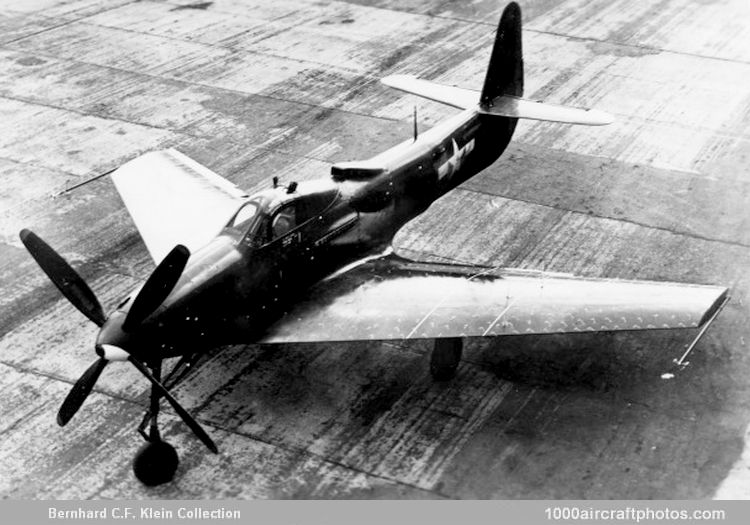03/31/2024. Remarks by Johan Visschedijk: "On May17 , 1946, Bell Aircraft announced that 'experimentation with the use of sweptback wings in an effort to reach the ultimate goal of man-carrying flight beyond the speeds of sound has passed from the high-speed wind-tunnel stage to the use of full-scale aircraft'. This announcement marked the first stage development of the USN research swept-back wing experimental program.
To do so, two P-63 airframes were diverted for modification: one was an XP-63N with 379 hours of flight time and received the model designation L- 39-1 (BuNo. 90060); the other was a P-63A-9-BE and received the model designation L-39-2 (BuNo. 90061). The BuNos were reassigned from a cancelled RY-3 batch.
The main modification consisted of mounting P-63E-like outer wing panels with 35° sweepback. The main undercarriage was not retractable but the nosewheel was still retractable. To modify the center of gravity position, ballast was installed in the rear fuselage. But it was later discovered that this ballast was insufficient and it was decided to change the four-blade propeller for a lighter three-blade one from a P-39Q. After further tests, the fuselage was lengthened by four feet, a large ventral fin was added and wing slots installed in the wing leading edges. The maiden flight of the L-39-1 was made on April 23, 1946, at Niagara Falls Airport with Bell test pilot A.M. 'Tex' Johnston at the controls. Johnston also made the first flight of the L-39-2. This aircraft was equipped with an automatic fuel equalizer designed to maintain a constant position of center of gravity during flight.
Both aircraft were used to correlate previous wind tunnel experiments and were also used for various other experiments. For example, in August 1946, L-39-2 was fitted with a circular arc airfoil developed for the future Grumman XS-2F Tracker. The L-39-1 was ferried to NACA Langley Research Center on 22 August, 1946, by L.W. Grey. However, four days later, all tests were halted, and the entire program was withdrawn. Apparently both aircraft were returned to Bell.
The L-39-1 was sent again to Langley on December 11, 1946, the L-39-2 was modified to have a wing with a very sharp leading edge. This wing was similar to that of the forthcoming X-2. Three years later both aircraft were transferred to NACA Lewis Research Center in Cleveland, Ohio, on December 12, 1949. The two airframes were eventually sold as scrap in 1955."
